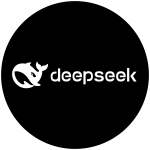Photo Courtesy | LinkedIn.
In the digital epoch, the Internet of Things (IoT) emerges as a beacon of innovation, weaving a web of connectivity between devices and the vast expanse of the internet. From the most mundane household gadget to the most intricate industrial machinery, the IoT promises to redefine how we interact with our environment, offering a tapestry of convenience, efficiency, and productivity. Yet, beneath the surface of this interconnected realm lie formidable challenges and considerations that demand our utmost attention.
The IoT landscape sprawls across a diverse spectrum of interconnected devices, spanning from everyday household items like thermostats and light bulbs to sophisticated industrial systems and autonomous vehicles. These devices serve as conduits, collecting, transmitting, and analyzing data, enabling seamless communication both amongst themselves and with centralized systems.
Industries stand at the forefront of this revolution, leveraging IoT technologies to usher in a new era of automation and optimization. Manufacturing plants deploy IoT sensors to monitor equipment health in real-time, averting breakdowns and fine-tuning maintenance schedules. Healthcare facilities harness wearable devices to remotely track patients' vital signs, enabling proactive healthcare interventions. Agriculture benefits from precision farming techniques powered by IoT data analytics, optimizing resource usage based on real-time environmental insights.
Beyond industrial domains, the IoT extends its reach into the fabric of urban life, laying the foundation for smart cities. Integrated sensor networks monitor traffic patterns, manage energy consumption, and enhance public safety. Within homes, IoT devices weave a tapestry of convenience and comfort, from smart thermostats that adjust temperatures based on occupancy patterns to voice-activated assistants that control household appliances, transforming living spaces into intelligent ecosystems tailored to residents' preferences.
Yet, amidst the promise of interconnectedness, the IoT landscape is riddled with challenges that demand resolution. Security stands as a paramount concern, with interconnected devices presenting a sprawling attack surface for cyber threats. Ensuring robust encryption, authentication mechanisms, and regular software updates is imperative to safeguarding sensitive data and thwarting unauthorized access.
Interoperability emerges as another formidable hurdle, as the proliferation of proprietary IoT platforms risks fostering fragmented ecosystems that stifle seamless communication between devices. Standardization efforts, including the development of common communication protocols and data formats, are vital to fostering interoperability and nurturing ecosystem-wide compatibility.
Ethical and privacy considerations loom large in the wake of ubiquitous IoT adoption. The deluge of data generated by interconnected devices raises profound questions about user consent, data ownership, and the potential for misuse by corporations or government entities. Striking a delicate balance between innovation and privacy necessitates robust data protection regulations, transparent data governance frameworks, and mechanisms for obtaining informed consent from users.
Looking ahead, the IoT landscape is poised for continued expansion and evolution. Advancements in edge computing and artificial intelligence will empower IoT devices to process and analyze data locally, reducing latency and bandwidth requirements while bolstering privacy and security. 5G networks will further catalyze the proliferation of IoT devices, enabling high-speed, low-latency connectivity on an unprecedented scale.
In conclusion, the Internet of Things holds boundless potential to revolutionize industries, enhance urban living, and enrich our daily lives. Yet, realizing this potential demands concerted efforts to address the formidable challenges of security, interoperability, and privacy. By fostering collaboration among stakeholders, embracing robust cybersecurity measures, and upholding ethical principles, we can harness the transformative power of the IoT while safeguarding individuals' privacy and security in an increasingly connected world.








